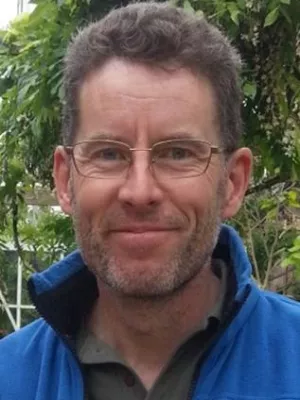
Dan Hammarlund
Professor

Impacts of long-term land use on terrestrial organic matter input to lakes based on lignin phenols in sediment records from a Swedish forest lake
Author
Summary, in English
Organic carbon burial in lake sediments plays an important role in the global carbon cycle, and is heavily affected by the terrestrial organic matter input. However, few studies have focused on long-term changes in terrestrial organic matter input to lakes in response to land-use changes. The aim of this study was to assess variations in sedimentary terrestrial organic matter over the last 1000 years based on lignin biomarker records from two sediment cores from Lake Skottenesjön, southwestern Sweden. In combination with pollen-based quantitative land cover reconstruction, we investigated the impacts of centennial-scale land-use changes on terrestrial organic matter input to lake sediments. The results show that human activities in the catchment had significant impacts on terrestrial organic export by modifying the vegetation cover. Intensified use of the forest in the 18th and 19th centuries led to enhanced soil erosion, and increased terrestrial organic matter input to the lake. Although farmland expanded between the 12th and the middle of 14th century, no significant change in terrestrial organic matter input was observed at that time. Much higher export of terrestrial organic and minerogenic matter to the lake was observed during the period of modern forestry in the 20th century as compared to previous periods of minor forest disturbance, such as 11th century. The changes in the vegetation cover in the catchment considerably modified the composition of terrestrial organic matter deposited in the lake sediments, which is reflected by the composition of lignin phenols. This study demonstrates that the combination of lignin phenols analysis and pollen-based quantitative land cover reconstruction is a useful approach for investigating long-term changes in terrestrial organic matter delivery to lake ecosystems.
Department/s
- Quaternary Sciences
- BECC: Biodiversity and Ecosystem services in a Changing Climate
Publishing year
2021
Language
English
Publication/Series
Science of the Total Environment
Volume
774
Links
Document type
Journal article
Publisher
Elsevier
Topic
- Environmental Sciences related to Agriculture and Land-use
Keywords
- Lake sediments
- Land use
- Lignin phenols
- Terrestrial organic matter
Status
Published
Project
- Implications of land use on the carbon cycle - Impacts of long-term human activities on terrestrial organic matter input to aquatic ecosystems in southern Sweden
- Late Holocene climate change and human impacts in southern Sweden based on lake sediments
ISBN/ISSN/Other
- ISSN: 0048-9697

